Service
Information technology
Security and safety are at the heart of effective corrections management, therefore we’ve partnered up with the best to deliver an integrated offer as far as cutting edge IT is concerned.
Technology-based systems allow a better allocation of staff and enable the reduction of the staff-to-inmate ratio in active surveillance activities when compared to conventional prisons.
Together with our specialized partners in traceability and computer vision systems and world-class technology partners, we’re able to provide engineering capacity, software and hardware systems in the implementation of biometric access systems for prison units; computer vision and intelligent video-surveillance systems; indoor and outdoor inmate and staff tracking solutions, vehicle security and fleet management systems, and much more.
- Offender management
- Inmates monitoring
- e-Learning
- Virtual Reality
- Mobile handheld devices
- e-Health
- Staff management
- Facility management
Justice systems are going digital. We strive to achieve prisons and probation systems digital transformation
Offender management systems provide information support to the various hierarchical levels of the different justice agencies computerizing operations and providing an intuitive interface for recording and immediate generation of reports.
At IPS, we support the design and implementation of all-in-one innovative IT based decision support systems aiming to improve the performance of government agencies – that are responsible for the enforcement of sentences, enforcement of young offenders sentences, enforcement of community measures and correctional healthcare – based on the integration of the core justice correctional functions and the automation of existing business processes.

Deploying real-time locating systems to identify people (inmates and staff) or objects
Using different technological solutions, we design and deploy real-time locating systems that allow us to identify people (inmates and staff) or objects within a building or a contained area.
Wireless tags may be attached to objects or worn by inmates or staff being possible to determine:
- The location of an inmate or a member of staff in a given moment;
- The relation between the person and the location (and respective authorization);
- The relation between the person and the activity that needs to perform;
- Prevent potential conflicts when different persons from different groups get together.
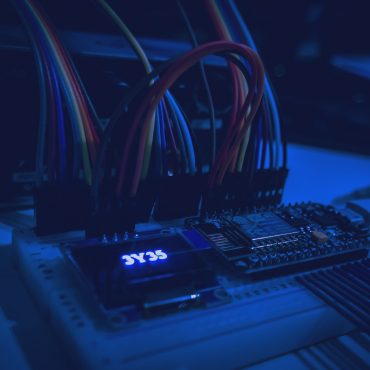
e-Learning is one of the best measures available to improve chances of prisoners after release
e-Learning consists in the use of electronic technologies to deliver part or all of an educational curriculum outside the traditional classroom, typically on the Internet.
The topic is particularly significant in correctional settings, given that the importance of training and education for prisoners is acknowledged by the codes and rules regulating imprisonment, its organisation, its purpose and goals in many countries, especially in Europe.
Nevertheless, not in all countries do inmates have the legal right on education. There are international conventions and recommendations, like the European Prison Rules published by the Council of Europe (2006), for instance, which undescore that every prisoner should be provided access to educational programmes considering their abilities, needs and aspirations.
e-Learning represents, therefore, one of the measures that there are to improve chances of prisoners after release, having the potential to reduce recidivism, to thereby improve security and in the end to also pay off economically.
At IPS, we design and implement innovative e-training and e-learning solutions, namely:
- Secure e-Learning infrastructures for inmate training;
- Specific e-Learning content for inmates education;
- Virtual reality training programmes;
- Digital video-based learning system operated through the internal closed TV circuit;
- Tailor-made training courses;
- Game-based learning solutions.

Virtual reality gives inmates (and staff) access to virtual versions of training scenarios usually not possible in prisons
Its rehabilitative power is related to recidivism reduction, costs savings and better social reintegration.
Virtual reality for prisoners’ psychosocial rehabilitation purposes has the power to leverage realistic images, sounds, sensations and effects in an attempt of replicating a real-life environment.
Virtual reality surely benefits low-level learners and those with language barriers, covering a wide range of learning needs. Besides 360º immersive career and vocational training, virtual reality can also be used to create tailor-made learning plans, whilst having the advantage of letting users learn at their own paces.
Beyond educational, citizenship and career skills, virtual reality has also proven successful in healthcare, where it has been used to overcome cases of acrophobia, post traumatic stress disorder, along with other mental health conditions. It can be used to deliver cognitive behavioural therapy to help inmates change negative thoughts and behaviour, for instance. It has also been used successfully for reduction of stress, anxiety and phobias.
By leveraging such advancements in virtual reality technology, it’s possible to reduce the number of repeated offenses and re-incarceration rates, thus fostering wider social good and driving positive change within the global community.
Along with our partner, Virtual Rehab, we are building upon the successes of virtual reality technology to educate, train, and address various offences to rehabilitate inmates, improve their mental health and emotional intelligence so as to prepare their social reintegration.
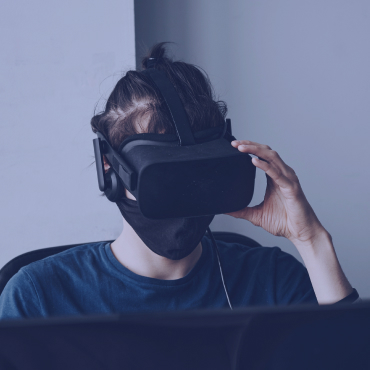
The use of mobile devices for information, communication, education and training purposes is on modern prison systems’ agenda
In a global society in which constant and immediate contact and technology are part of most people’s life – the possible use of mobile devices, for information, communication, education and training purposes, is definitely on modern prison systems’ agenda.
As long as security and safety measures are ensured, it makes sense to ease the use of mobile handheld devices among detainees, as the importance of allowing and encouraging good family contact for prisoners is undeniable.
The more isolated, the more difficult their experience of freedom deprivation; the more difficult their experience of prison, the worse they’ll get ready for social reintegration. Communication restrictions in prisons might not only be avoiding the reoffending tendency but also add to one of the most impoverished groups in the digital age.
Secure access to and use of mobile ICT devices could be beneficial to prisoners who pose a low risk to society, aiming at adding to their rehabilitation process, as well as to their job skills empowerment and to their digital inclusion.
At IPS, we support the digital adaptation of correctional institutions, namely by providing advice, technical and strategic planning, and practical on-site deployment of solutions regarding the use of mobile handheld devices, directed at both inmates and prison staff, at the same time ensuring full accordance with safety and security requirements.
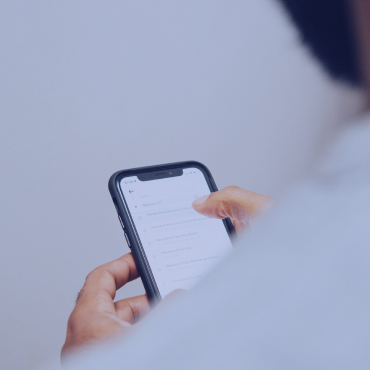
Remote healthcare solutions are of great importance and effectiveness in the correctional context
Detention often entails an added difficulty to recover from an existing illness or dependency.
At any given time, over two million people are imprisoned in penal institutions, in Europe alone, therefore, telemedicine, remote monitoring and delivery of health care are promising for use within any prison system.
Telemedicine reduces correctional health care costs and decreases security risks. The deployment of telemedicine projects in prisons indicates that, besides cost savings, remote medical consultations can provide access to new specialists and improve the quality of care delivered to inmates.
We offer full-fledged services in e-Health and telemedicine:
- Designing the overall telemedicine architecture;
- Building the “business case” for implementation;
- Supporting the necessary legal adjustments for telemedicine implementation;
- Selecting proven e-Health technology providers;
- Deploying and monitoring of the project.

Traditional activity logbooks or manually-fed electronic programs/forms no longer keep up with the management needs of correctional institutions
Activities that are registered on paper logs result in inefficient records management, communication breakdown, and uncertainty about whether, for instance, inmates have actually been involved in certain work, physical or educational activities.
Besides the traditional logbooks, many institutions still rely on manual electronic systems that lack proof of officer presence.
Some facilities use access control and conventional guard tour systems, but these tools are limited in their ability to automate more than a single task, and their data collection and reporting capabilities are narrowly focused.
We provide the automatized cutting-edge management solution that meets the needs of any corrections’ leader: iAMS – inmate Activity Management System.
This solution supports the elimination of staff miscommunication and process inefficiencies by simply reading a code bar, data matrix or radio frequency identification (RFID) tag.
It allows prison management to automate and streamline workflows and tasks while integrating with the facility’s existing prison or offender management system.
Such software is a tool for collecting, storing, tracking and measuring data. From inmate headcount and tracking to medication administration and preventative maintenance tasks, prison equipment and vehicle management, and supply accounting, the system allows officers to eliminate paper tracking altogether.

Penal institutions could benefit from using comprehensive and integrated management software solutions
As policy makers get more aware of environmental efficiency needs and penal institutions – namely prisons – get more complex to manage, due to the growing introduction of technology and externalization of maintenance and services, there’s a growing need to integrate facilities management support software tools with existing solutions.
We plan and assist the integration of solutions that provide a broad range of capabilities, encompassing facilities maintenance, space planning, data center infrastructure management, sustainability, service management and functionality supporting outsourcing facilities service providers.
By integrating this solution, corrections management teams will be able to:
- Manage all of asset deployment, specifications, monitoring, calibration, costing and tracking from a single system;
- Manage vendor contracts with comprehensive contract management support for purchase, lease, rental, warranty, rate, master, blanket and user-defined contracts;
- Define service offerings and establish service level agreements (SLAs) to help align service levels with organisational objectives.
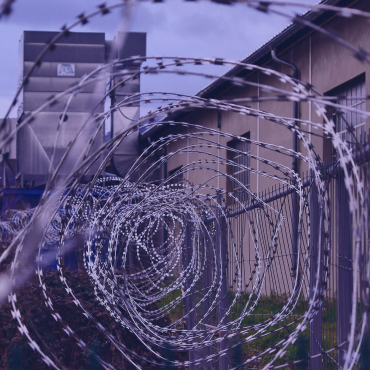
Projects

BLEEP
Blended Learning Environment for European Prisoners
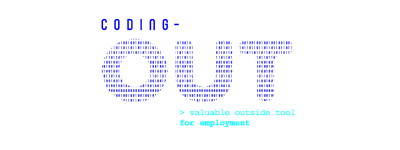
Coding-OUT
Coding in prison as a valuable OUTside tool for employment

CREDEM IN SCHIMBARE
Cultural change in prisons

ECOPRIS
Ecological Economics in Prison Work Administration
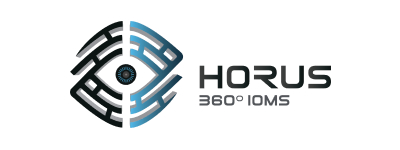
HORUS 360 iOMS
Intelligent Offender Management System
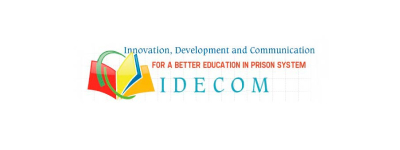
IDECOM
Innovation, Development and Communication for a better Education in Prison Systems

PGISP
Managing for innovation

TRAIVR
Training of Refugee Offenders by Virtual Reality

ViRTI
Virtual reality for training inmates

VR4DRUG Rehab
Developing and Using Virtual Reality Technology for the Rehabilitation of Drug Users in Probation Services

VR4React
Reducing Reactive Aggression through Virtual Reality